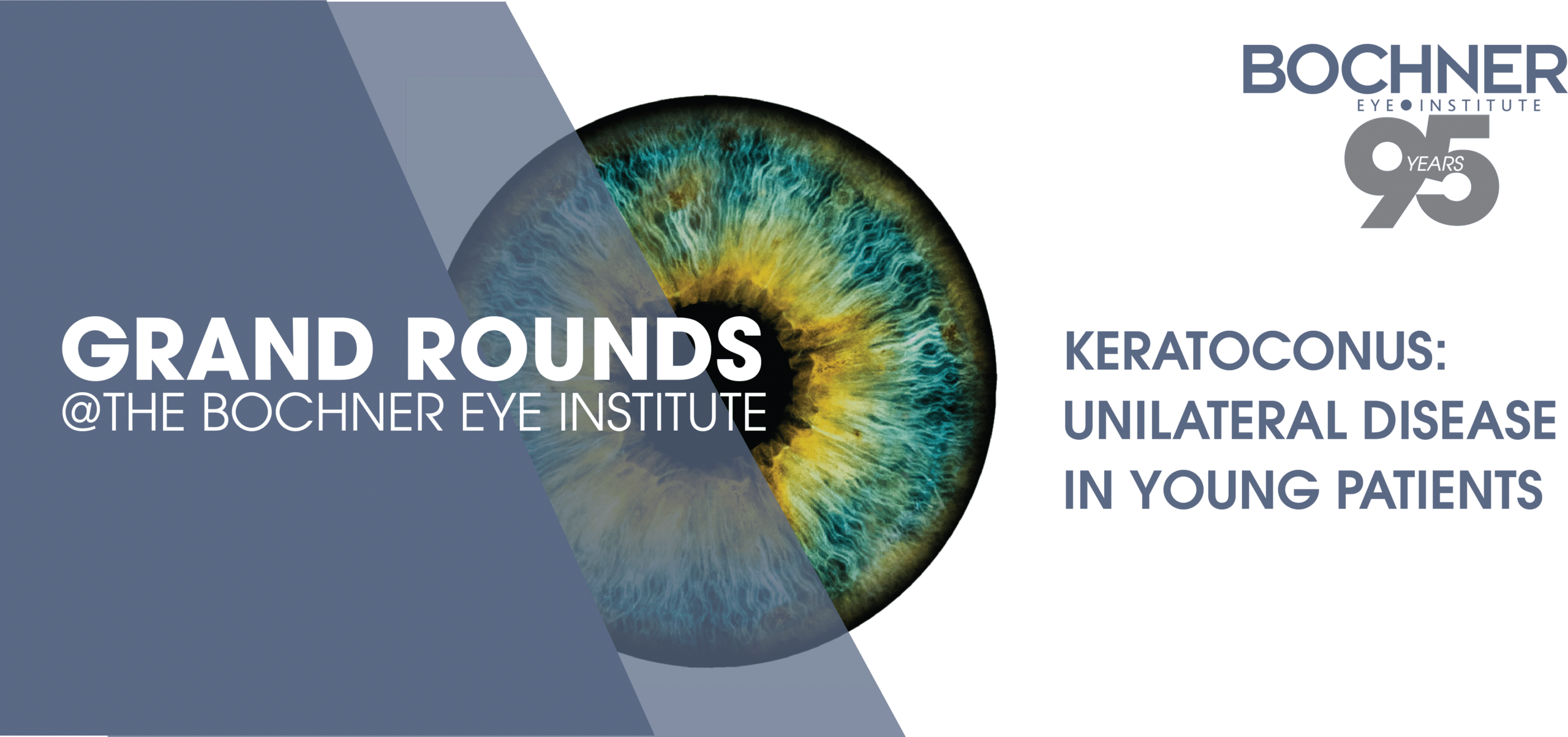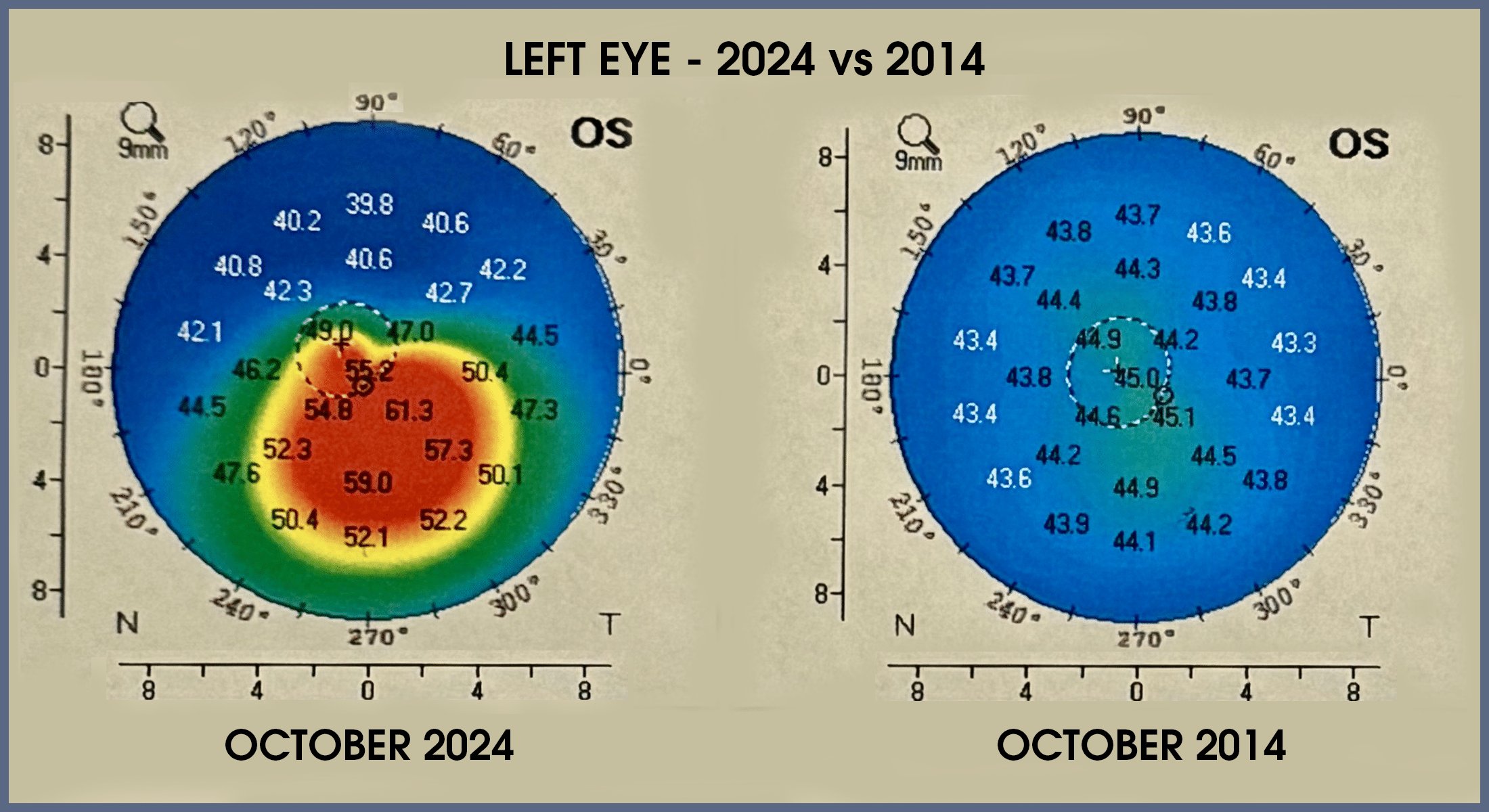
CASE OVERVIEW
In 2014, a 15-year-old male presented with advanced keratoconus in his right eye, while his left cornea appeared normal. There was no family history of keratoconus. His best-corrected spectacle vision was 20/60 in the right eye and 20/20 in the left. Due to his young age and the risk of progression, corneal cross-linking (CXL) was recommended for both eyes. However, the patient and his parents were hesitant to treat the seemingly normal left eye.
After CXL on the right eye, the family was advised to attend regular follow-ups to monitor for any signs of progression in the left eye. Unfortunately, the patient did not return for follow-up and came back 10 years later with advanced keratoconus in the untreated left eye, while the treated right eye remained stable.

OBSERVATIONS & RECOMMENDATIONS
KEY POINTS TO UNDERSTAND:
- Bilateral CXL in Younger Patients: CXL is recommended in patients under 25 years of age with unilateral keratoconus to reduce the risk of keratoconus in the contralateral eye.
- Importance of Follow-Up: Regular post-CXL follow-ups are crucial to detect any progression. Corneal topography, along with digital subtraction techniques, can identify steepening that indicates progression.
- High Success Rate: CXL has a reported success rate of 98 % in preventing keratoconus progression, in eyes with K values below 55 D.
- Addressing Eye Rubbing: Eye rubbing can contribute to keratoconus progression post-CXL, and this should be discussed with all patients undergoing the procedure.
- Genetic Factor: Occasionally keratoconus can occur in multiple family members. It is worthwhile to examine siblings especially with topography to rule out keratoconus.
- Keratoconus, Age, and CXL: Treatment can be done at 10 years of age or younger. With proper coaching and having a parent in the operating room, the treatment can usually be completed with success.


